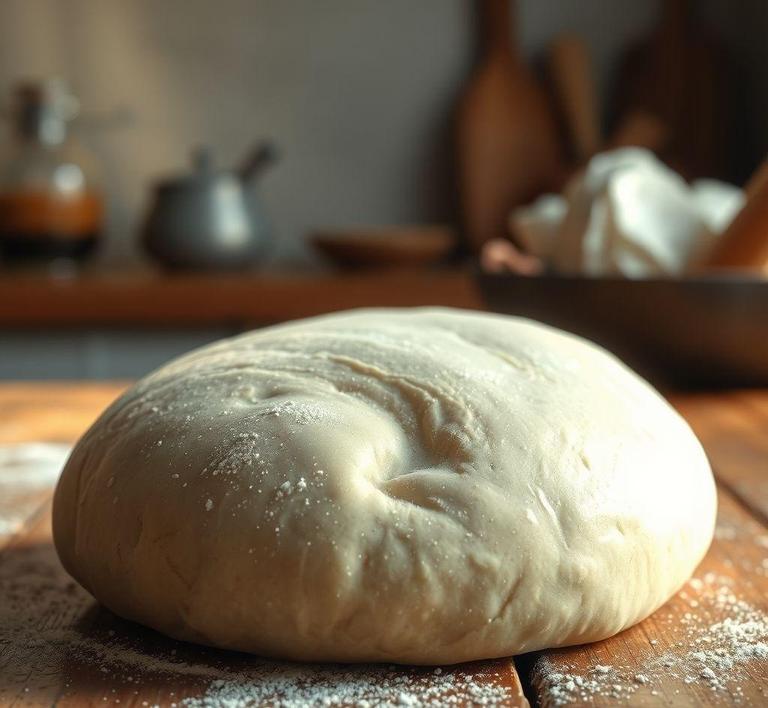Refreezing dough can be a bit of a mystery for some home bakers, but it doesn’t have to be! Whether you’ve made too much dough or want to save some for later, knowing how to properly refreeze dough can save you time and hassle. This guide will walk you through the best practices for freezing, thawing, and refreezing dough without compromising its texture or flavor. With just a few simple tips, you can enjoy fresh dough whenever you need it, without worrying about it going to waste. So, let’s dive into the essentials of refreezing dough to make your baking adventures even easier!
Can You Refreeze Dough?

Yes, you can refreeze dough, but it’s a bit more nuanced than a simple yes-or-no answer. The ability to refreeze dough depends on several factors, including the type of dough, how it’s been handled, and the reason you’re refreezing it in the first place.
The Science Behind Freezing Dough
Freezing dough works by slowing down the fermentation process. Yeast, which is responsible for leavening dough, becomes dormant in the cold, and when dough is thawed, the yeast "wakes up" and continues the fermentation process. This is why freezing dough can actually benefit some recipes-especially when you plan to bake the dough at a later time.
When You Shouldn’t Refreeze Dough
While refreezing dough is generally safe under the right conditions, there are exceptions. If the dough has already gone through the proofing process (i.e., if it has risen after being mixed and kneaded), it can lose some of its structural integrity after being frozen, thawed, and refrozen. This is especially true for bread dough, which relies on yeast to produce gases that help it rise. If you repeatedly freeze and thaw dough, the yeast activity may be severely diminished, leading to less rise and a denser, heavier texture in the finished product.
In addition, if the dough has been handled improperly-if it was left out too long at room temperature, or if it was not stored correctly in the first place-refreezing can increase the risk of bacterial growth or food spoilage. So, it’s important to ensure that the dough was properly frozen, kept cold, and handled safely at all stages of the process.
How To Refreeze Dough?
Refreezing dough requires some care, but it’s absolutely possible with the right approach. Here’s a step-by-step guide:
-
Initial Freezing
- Before refreezing dough, make sure it’s properly frozen to begin with. After preparing the dough and allowing it to rise for the first time (if applicable), portion it out into your desired sizes. This is especially important if you don’t want to deal with a whole batch of dough each time.
- Shape the dough into balls or the form it will take before baking (such as pizza dough, bread loaf, etc.). This helps the dough freeze evenly and allows for easier defrosting later.
- Wrap the dough tightly in plastic wrap or wax paper, followed by a layer of aluminum foil or place it in an airtight container. The goal here is to avoid any exposure to air, which can cause freezer burn and affect the dough’s quality.
-
Thawing And Refreezing
- Thaw the dough in the refrigerator (not at room temperature) to maintain safe food handling practices. Typically, 12-24 hours in the fridge is sufficient for a dough ball to thaw.
- After it has thawed and you’ve used part of the dough (or you simply decide to refreeze it without using any), wrap it up again just as securely as before. You can refreeze dough up to two times, although each refreeze will slightly reduce the dough’s texture and rise.
- Ensure that the dough has been handled gently during thawing and that it has not been exposed to warmth for too long. If it has risen too much during thawing, you might want to gently punch it down before refreezing.
-
Baking After Refreezing
- When you’re ready to bake dough that has been refrozen, let it thaw slowly in the fridge again before bringing it to room temperature for any final rise. The dough may need a little extra time to rise, depending on how many times it has been frozen and thawed.
- It’s also a good idea to conduct a quick ‘proofing test’ before baking. Place a small piece of dough in warm water. If it floats and bubbles, the yeast is still active, and your dough is ready to rise. If not, the yeast may have been too compromised by freezing, and the dough will not rise as effectively.
Quality Impact
Refreezing dough doesn’t come without consequences to quality. The primary concerns revolve around the texture, rise, and overall flavor of the dough. Let’s break it down:
1. Yeast Activity:
The biggest effect of refreezing dough is on the yeast. Freezing and thawing dough multiple times can weaken the yeast, leading to diminished rise during baking. As a result, your dough might be denser than it would have been if you used it fresh. Bread loaves or pizza crusts may not develop as much airiness, which can impact their chewiness or crispness.
2. Texture:
Freezing can cause changes in the dough’s water molecules. When the dough is frozen, the water inside it forms ice crystals, and these crystals can rupture some of the gluten strands. This can lead to a dough that’s slightly less elastic and a bit more difficult to handle after being thawed. However, this effect is usually minimal, especially if the dough isn’t frozen for extended periods.
3. Flavor:
Refreezing dough can also alter its flavor profile, particularly when using yeast-leavened doughs. Yeast is responsible for developing much of the flavor in bread and pastries, and repeated freezing and thawing can stifle its activity. This may result in a bread that lacks the depth of flavor found in freshly-made dough.
4. Dryness and Freezer Burn:
If dough isn’t wrapped or stored correctly during freezing, it’s prone to freezer burn. Freezer burn happens when moisture evaporates from the dough and turns into ice crystals on the surface, causing dryness and potential flavor loss. Dough that’s exposed to air is more likely to develop freezer burn, which can affect its texture and rise.
Refreezing dough can be a convenient solution for preserving leftover dough or making ahead for later baking, but it requires proper technique and consideration of how the dough will behave after being frozen and thawed. While it’s possible to refreeze dough, it’s essential to remember that each freeze-thaw cycle slightly diminishes the yeast activity and can change the texture and flavor of the dough.
For best results, limit the number of times dough is frozen and always ensure it’s properly wrapped and stored. If you’re freezing dough that’s been proofed or risen, expect some loss in texture and yeast performance, especially after multiple freeze-thaw cycles. For everyday use, fresh dough is usually the best option to guarantee optimal quality, but for planned meal prepping or a busy schedule, refreezing dough can definitely be a useful strategy when done with care.
In the end, if you plan ahead and handle your dough carefully, refreezing can help you save time and still enjoy freshly-baked goods without compromising too much on quality. Just remember that with each freeze, you’re taking a small hit in texture and flavor, but it’s often worth it for the convenience!
Is It Safe To Refreeze Dough?
Refreezing dough is a subject that stirs up a lot of questions, especially when it comes to maintaining the texture, flavor, and safety of your baked goods. The answer is not as straightforward as a simple ‘yes’ or ‘no’ because it depends on several factors, including the type of dough, how it was initially frozen, and how it’s handled during the freezing and refreezing process.
From a safety standpoint, it’s generally safe to refreeze dough if it has been stored correctly and has never been left out at room temperature for extended periods. The main concern with refreezing dough involves the growth of bacteria during thawing, especially when the dough has been exposed to temperatures between 40°F and 140°F (4°C and 60°C) for too long. If the dough has thawed out completely, refreezing it could allow bacteria to grow, which may lead to foodborne illnesses when you bake it later.
However, if the dough is only partially thawed, or if it was kept at a safe temperature throughout the freezing and thawing process, refreezing can be done without posing any major safety risks. The key lies in maintaining the dough’s integrity – avoiding contamination and not allowing it to sit in the ‘danger zone’ temperature range for too long.
It’s also important to note that the type of dough plays a significant role in determining whether refreezing is a good idea. For example, doughs that contain yeast (like pizza or bread dough) can be refrozen, though they may not rise quite as well on the second round. Non-yeast-based doughs, such as cookie dough or pastry dough, typically refreeze better because they are less affected by the freezing process in terms of texture and rise.
Signs That Dough Should Not Be Refrozen
Not all dough is suitable for refreezing, and there are certain signs that suggest it’s better to avoid putting it back in the freezer. Here are a few things to look out for:
- It’s been thawed for too long: If your dough has been sitting out at room temperature for longer than 2 hours (or 1 hour if it’s particularly warm), it’s best not to refreeze it. Prolonged exposure to temperatures above 40°F (4°C) encourages bacterial growth, which can lead to foodborne illnesses.
- It has an off smell: Dough, particularly when made with yeast or dairy, can develop a sour or rancid smell if it has been improperly thawed or left out for too long. If it smells off, discard it. Even if you refreeze it, there’s a risk that the unpleasant odor will carry through to the final bake.
- It has changed texture: Dough that has been thawed and becomes overly sticky, mushy, or loses its elasticity may have started to deteriorate. Once dough begins to break down in this way, refreezing won’t help restore its quality. In fact, it may worsen, affecting the outcome of your baked goods.
- Excessive freezer burn: If you notice that the dough has freezer burn (dry patches, discoloration, or ice crystals), it’s a sign that the dough has been exposed to air or moisture. Refreezing dough in this condition will likely result in a compromised texture and taste, and it’s better to discard it.
- Unclear or questionable freezing history: If you can’t confirm how long the dough was frozen or whether it was thawed and then refrozen multiple times, it’s safer to avoid refreezing. The quality of the dough will be compromised, and there may be hidden safety concerns.
Common Refreezing Mistakes
When it comes to refreezing dough, several mistakes can hinder the quality or safety of your final product. Some common pitfalls include:
- Refreezing dough after it’s fully thawed: One of the most common mistakes is refreezing dough that has already been fully thawed. Thawing and refreezing dough multiple times compromises both the texture and the flavor. While dough that has only partially thawed may still be safe to refreeze, complete thawing should signal the end of the freezing cycle.
- Improper packaging: If the dough isn’t well-wrapped or sealed before freezing, it can suffer from freezer burn, leading to dry, crumbly dough upon baking. Always make sure the dough is tightly wrapped in plastic wrap, followed by a layer of foil, or stored in an airtight container to protect it from exposure to air.
- Not cooling dough before freezing: Dough that has been recently mixed and is still warm should not be placed directly in the freezer. Allow the dough to cool completely before freezing to avoid creating moisture that will degrade the dough and cause it to become soggy or sticky when thawed.
- Refreezing dough with yeast-based recipes: While it’s possible to refreeze yeast dough, many people make the mistake of not allowing the dough enough time to rise fully during the first thawing process. The yeast can become less active with each freeze/thaw cycle, which could result in poor rise and denser baked goods.
- Refreezing dough with other ingredients: Dough with added ingredients like eggs, dairy, or butter can be trickier to refreeze than dough that’s more basic. When refreezing dough with these ingredients, it’s important to check the texture and quality before doing so. The dough may become overly greasy or develop an unpleasant taste after being thawed and refrozen.
Tips And Tricks For Refreezing Dough
Refreezing dough can be done successfully with a little care. Here are a few helpful tips to ensure the best outcome:
- Label and date your dough: This simple practice can help you keep track of how long the dough has been frozen and when it was thawed. Knowing exactly when the dough was frozen or thawed can help you avoid unnecessary risks.
- Portion the dough before freezing: If you know you won’t need the entire batch of dough at once, divide it into smaller portions before freezing. This way, you can thaw only the amount you need without refreezing the entire batch. Smaller portions freeze and thaw more quickly and evenly.
- Use parchment paper for separation: If you’re freezing dough that’s been portioned out (such as cookie dough), place small pieces of parchment paper between each portion to prevent them from sticking together. This way, you can easily pull out the exact number of dough portions you need without thawing the whole batch.
- Thaw dough correctly: When you’re ready to use your frozen dough, plan ahead and thaw it in the refrigerator, not at room temperature. This will allow the dough to thaw gradually, minimizing the risk of bacterial growth and preserving its structure.
- Consider adding more yeast: If you’re refreezing dough that contains yeast, consider adding a small amount of fresh yeast when you thaw it for the second time. This can help rejuvenate the dough’s rising power, leading to a lighter texture when baked.
- Don’t overwork the dough: After refreezing, the dough may become slightly stiffer or harder to work with. Be gentle when handling it, as overworking the dough can ruin the texture. Let it rest a little longer if necessary before you proceed with shaping or baking.
Conclusion
In conclusion, refreezing dough is possible, but it’s not always advisable for every type of dough, and the safety and quality of your baked goods largely depend on how the dough is handled at every stage of freezing and thawing. Pay attention to the signs that dough should not be refrozen, avoid common mistakes, and follow the tips and tricks for best results. When done properly, you can enjoy the convenience of having dough on hand for future baking, but it’s important to weigh the risks and make informed decisions to ensure your dough still produces delicious, safe, and well-textured results.


